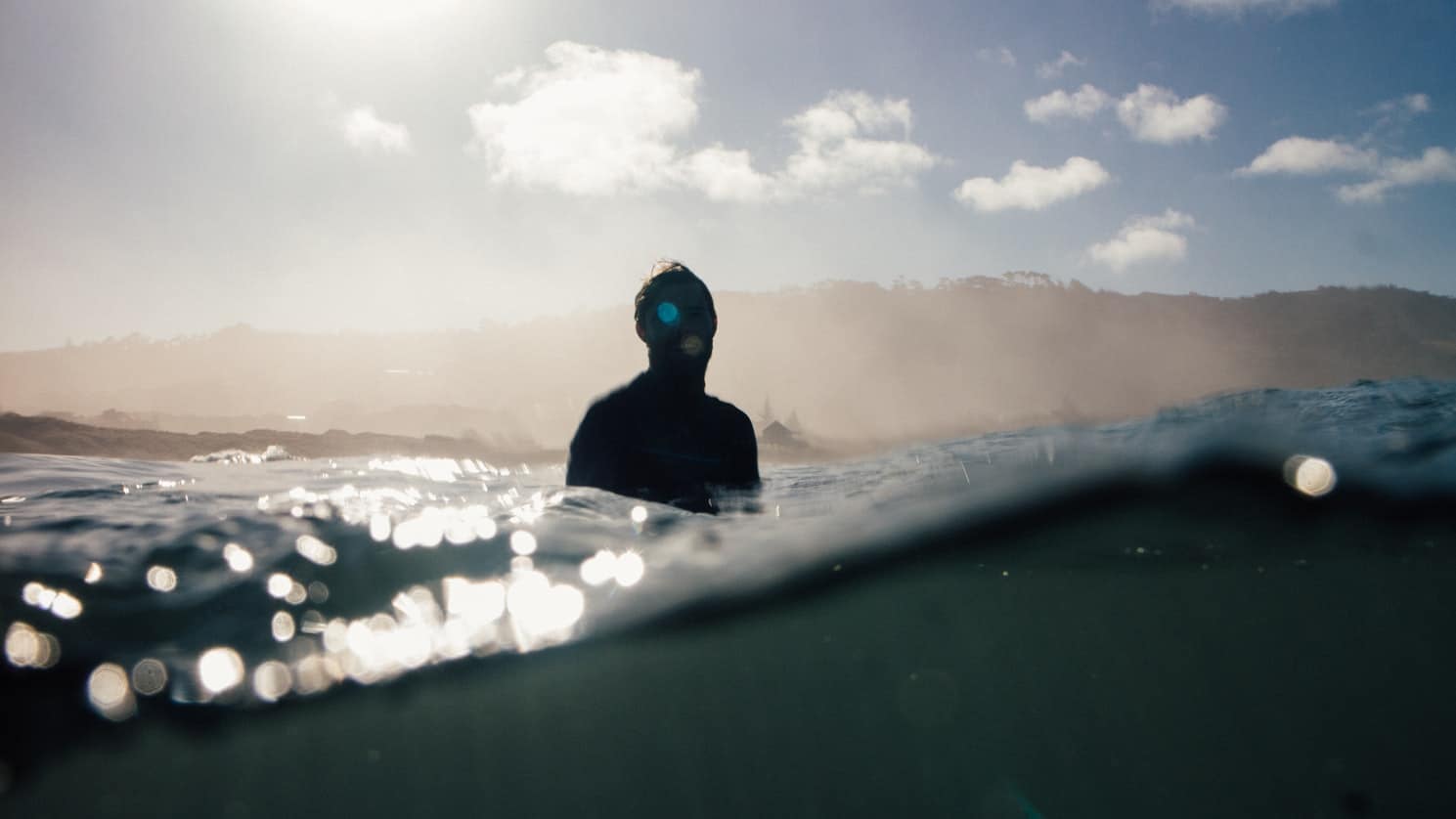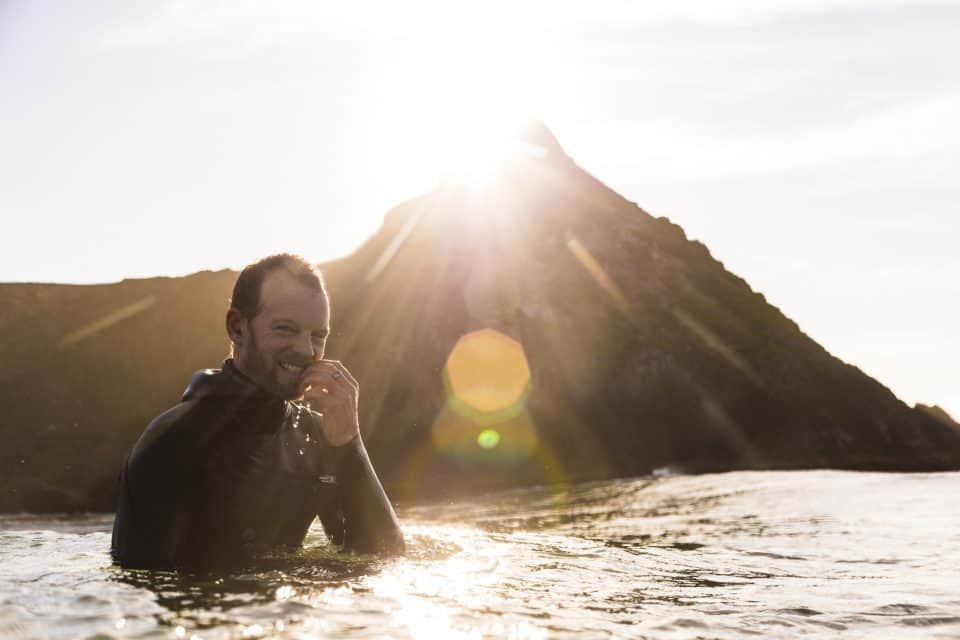Can You Learn To Surf At The Age Of 40?
Someone who goes body surfing knows how it feels to be lifted by the powerful force of the ocean. Riding a wave takes an eternity in time but time is no longer relevant. The wave you ride is all that exists; the experience seems endless. I’d watch TV shows about surfers and noticed that many of them were quite young and wondered if men nearing 40 like me could surf too. I decided to look into it because it was something I’d always wanted to do, but I didn’t grow up near a large body of water.
So, can you learn to surf at the age of 40? The answer is yes, as long as you don’t have an underlying illness or injury that would prevent you from handling the physical challenges of surfing. If you already do cardio-strengthening sports such as swimming, running or bike training, then you should easily be able to meet the physical demands of surfing. Generally speaking, a man in good health should have no problem learning to surf in his 40s.
What Are The Physical Demands Of Surfing?
Surfing is a physically demanding sport. You need to be physically fit since surfing requires strength in all your muscle groups, especially arms, shoulders, and legs. Most surfing activity involves rigorous paddling in the water to catch waves at the crucial takeoff point. It’s estimated that almost half the time during an hour of surfing is spent paddling in the water.
When paddling, you will alternate between your arms, legs, or a combination of the two. Your two arms act like oars, except you’re on a surfboard, not in a boat. Lying on your belly with your arms on either side of the board, with your feet together, you “swim” on the board, using your right arm only to turn the board left, and vice versa.
Kick paddling mainly involves the legs. Sliding your body to the end of the board below you, you can kick your legs to get the traction you need to move forward.
By using your arms to paddle and your legs to kick simultaneously, you can advance quickly toward the wave in time to catch it.
When I went out the first few times, I felt exhausted by the end. My arms and legs ached, and walking felt a bit painful. But I loved the feeling of being out on the water and the fresh sea breeze. The second time I was out, I surfed for about 40 minutes and didn’t ache as much. Within a week my body was conditioned to surf. I no longer ached and focused on approaching waves on the board.
The paddling and kicking movements were physically demanding, but any 40-year-old man in decent health can overcome it. You’ll feel worn out the first few times form constantly using your muscles, but over time it will go away, and you’ll be ready to enjoy being on the water and riding waves.
A great way to condition your body to surf is by swimming, especially freestyle swimming because the movement your body makes in freestyle mimics almost exactly the way you paddle on a surfboard.
By the time some guys reach the age of 40, they’ve worked for years at a desk and never established a fitness regimen, like going to the gym, running, or biking in their free time. They’ve developed a spare tire around the gut and find that running or playing basketball takes their breath away.
When you surf, your heart pumps quickly and you use your muscles for paddling and swimming. Surfing is a cardio exercise. If you hadn’t done any physical activity in a while, make sure to see your doctor before enrolling in your first surfing lesson. As soon as he gives you the all-clear, you’re good to go!

What Health Benefits Do I Get From Surfing?
Surfing is a great idea especially for guys in their 40s who haven’t had regular exercise in a while. Besides physical benefits, surfing reduces stress and relieves tension. There’s no place as peaceful and natural-feeling as the beach, and nothing better to gain a positive attitude towards your life and work.
Being out in the water and paddling in the direction of oncoming waves, your heart rate increases to facilitate the production of oxygen that your body needs for your muscles. It’s well-known that giving the cardiovascular system a workout strengthens the heart and helps prevent heart-related problems.
Core abdominal muscles also get a great workout too as your body twists from side to side. If you keep at you, you will begin to notice your body image improve.
It’s important to note that, unlike using weights, surfing takes place in the water, which acts as resistance and takes the place of barbells and dumbbells. The resistance of the water is not as “heavy” as free weights, but it’s constant resistance. Exercising muscles in the water produces a leaner, healthier body, not a bodybuilder body with huge muscles. Muscle is heavier than fat; paddling, kicking, and swimming in the water burns fat and builds lean, strong muscle.
Like every other sport, surfing takes time and learning to surf is a challenging experience. You must commit to it if you want to be a good surfer. Standing on the board, you can feel the visceral power of the ocean beneath you and the spray of water on your body and face. The feeling I have from catching the perfect ride and riding through the wave tube is difficult to describe in words. Riding on the water can be compared to driving a race car. But what other surfers have said about the feeling agrees with my own: there is a sense of deep tranquility and peace of mind hard to find in any other activity.
How Should I Prepare For My First Surfing Experience?
If you’re lucky enough to live in Hawaii or Southern California, you’ll find hundreds of good surfing instructors to choose from. You can surf almost anywhere that has oceans and good swells, especially when the tide is not too low or high.
There are a few things you’ll need to bring when you go to your first surfing lesson. I was advised not to buy a surfboard before I started, and I was glad I didn’t. Some instructors provide beginner surfboards that are made of styrofoam; they’re clumsy because they’re fatter and bigger than regular surfboards. They’re made so that anyone can float on them. But it made the learning experience much easier.
Throughout the lessons, if you think you’re ahead of the curve, you can go and rent a regulation-sized board before buying your own.
Make sure you bring a sunblock that’s made specifically for water sports. The sun reflects against the water and magnifies the sun’s rays. This type of sunblock appears white on the body and it’s a great idea to cover your nose and forehead with it. Remember to leave personal vanity aside when you take lessons; it’s not about how you look; it’s about learning to surf and having a great time. Other people in the group will likely look funny too. Without it, you can expect to get a mean sunburn.
Remember never to surf alone during your first few outings. If you develop a cramp, there will be someone there who can help you return to shore.
Go to a beach that’s good for beginner surfers. There are beginner, intermediate and advanced ski slopes. You’d never go on an advanced slope the first time; nor should you ride huge, fast-moving waves when you start.
Observe the waves as they roll into shore. Avoid waves that are moving too fast, because the current may be too powerful, causing your body to make contact with the sea bed and cause injury.
Like most exercises, it’s a great idea to warm up first before you take your first wave. Stretch your arms and your legs until you feel loose.
Get accustomed to floating on the surfboard before you take a wave. First, sit on the board out in the water, and then lie down on it, so you feel the current and the motion of the water underneath the board. If it seems calm enough for you, then you can stand up on the board.
First surf in whitewater, which are smaller waves that foam. Avoid fast-moving, rolling waves. Whitewater waves will gently guide you over the surf so you can make a slow and smooth landing. Never take on big challenges when you begin to surf. Take it slow and always be prepared.
Paddle rhythmically, not going too fast. You need to acclimate your board to the water. Swimming in a pool is a controlled water environment. There aren’t any waves and the water is smooth and calm. The ocean presents challenges and surprises. Paddle until your hands are moving steadily and you’re moving at a regular speed. Over time you will increase your paddling speed and get your whole body involved.
Start by trying to catch 20 white water waves. These waves require you to paddle hard because they break much more quickly than large waves. You’ll be successful if you can ride 7 waves out of the 20. Wipeouts are common and expected at the beginning.
You can learn to surf at the age of 40 at long as you have good physical health. Surfing increases the heart rate and all the muscles of the body are used. Make sure to get clearance from your doctor before taking your first lesson, or surfing on your own.
You will work up to the larger waves, so only sure on whitewater waves at the beginning. Use sunscreen, especially on your nose and other sensitive skin areas.
Most of all, have fun. You’ll be glad you decided to get into surfing, and soon it can become part of your lifestyle.

